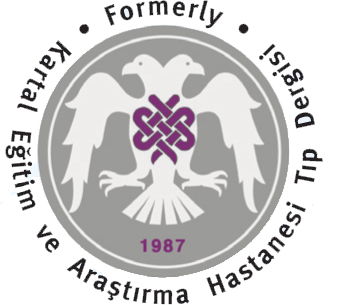Determination of the Difficult Intubation Incidence and its Affecting Factors in Patients Undergoing Septal Deviation Surgery Prospective Controlled Trial
Demet Altun1, Achmet Ali1, Levent Aydemir2, Nil Kırşan1, Mukadder Orhan Sungur1, Emre Çamcı11Department of Anesthesiology, İstanbul University Istanbul Faculty of Medicine, İstanbul, Turkey2Department of Otolaryngology, Head and Neck Surgery, İstanbul University Istanbul Faculty of Medicine, İstanbul, Turkey
INTRODUCTION: The aim of this prospective clinical study was to compare the incidence of difficult airway in patients undergoing septal deviation with the incidence of difficult airway in patients undergoing tympanoplasty and to determine the factors associated with the incidence of the difficult airway. Investigation of predisposing factors for difficult airway in patients undergoing septal deviation surgery was evaluated as a secondary outcome.
METHODS: A total of 255 participants, 130 patients undergoing septoplasty (study group-Group S) and 125 patients undergoing tympanoplasty (control group-Group T) were included in this study. Preoperative airway evaluation was performed using the LEMON protocol. For all patients, the STOP-BANG questionnaire was performed to identify the risk of Obstructive Sleep Apnea Syndrome (OSAS). Cormack-Lehane laryngeal view grades were noted during laryngoscopy. The definition of difficult intubation was identified according to the Cormack-Lehane scale (III=easy, IIIIV=difficult). Additionally, the intubation method used, number of intubation attempts, use of stylet, cricoid pressure, and usage of airway were recorded.
RESULTS: There were no unintubated patients in this study population. Cormack-Lehane score and incidence of difficult airway were significantly higher in the Group S than the Group T (p<0.001). Micrognathia (p<0.001, OR: 9.38, 95% CI: 2.7145.93) and OSAS (p<0.001, OR: 58.013, 95% CI: 14.025239.98) were found to be risk factors for difficult airway in patients undergoing septoplasty.
DISCUSSION AND CONCLUSION: The airway should be evaluated for difficult intubation before surgery and risk factors for difficult airway should be determined even in minor surgery.
Septal Deviasyon Ameliyatı Geçirecek Hastalarda Zor Entübasyon İnsidansının ve Etki Eden Faktörlerin Belirlenmesi: Prospektif Kontrollü Çalışma
Demet Altun1, Achmet Ali1, Levent Aydemir2, Nil Kırşan1, Mukadder Orhan Sungur1, Emre Çamcı11İstanbul Üniversitesi İstanbul Tıp Fakültesi, Anesteziyoloji Anabilim Dalı, İstanbul2İstanbul Üniversitesi İstanbul Tıp Fakültesi, Kulak Burun Boğaz, Baş Boyun Cerrahisi Anabilim Dalı, İstanbul
GİRİŞ ve AMAÇ: Bu prospektif klinik çalışmanın amacı septal deviasyon ameliyatı geçirecek hastalardaki zor havayolu insidansını timpanoplasti operasyonu geçirecek hastalardaki zor havayolu insidansı ile karşılaştırmak ve zor havayolu insidansına etki eden faktörlerin belirlenmesidir. Septal deviasyon ameliyatı geçirecek hastalardaki zor havayolu için predispozisyon yaratan faktörlerin araştırılması ikincil çıktı olarak değerlendirilmiştir.
YÖNTEM ve GEREÇLER: Çalışmaya septoplasti (çalışma grubu-Grup S) uygulanan 130 hasta ve timpanoplasti (kontrol grubu-Grup T) uygulanan 125 hasta olmak üzere toplam 255 katılımcı dahil edildi. Operasyon öncesi havayolu değerlendirilmesi LEMON protokolü kullanılarak yapıldı. Bütün hastalara uyku apne sendromu (UAS) risk tanısı için STOP-BANG soru testi uygulandı. Laringoskopi sırasında Cormack-Lehane laringeal görüntü dereceleri not edildi. Cormack-Lehane skalasına göre zor havayolu tanımlaması yapıldı (III=kolay, IIIIV=zor). Ek olarak kullanılan entübasyon yöntemi, entübasyon deneme sayısı, stile kullanımı, krikoid bası ve airway kullanımı kaydedildi.
BULGULAR: Bu çalışma popülasyonunda entübe edilemeyen hasta olmadı. Cormack-Lehane skoru ve zor havayolu insidansı Grup Sde Grup Tye göre anlamlı olarak daha yüksek bulundu (p<0.001). Mikrognati (p<0.001, OR: 9.38, 95% CI: 2.71 45.93) ve UAS (p<0.001, OR: 58.013, 95% CI: 14.025239.98) varlığı septoplasti geçirecek hastalarda zor havayolu açısından risk faktörü olarak bulundu.
TARTIŞMA ve SONUÇ: Havayolu operasyon öncesi zor entübasyon açısından değerlendirilmeli ve minör cerrahi bile olsa zor havayolu için risk faktörleri belirlenmelidir.
Manuscript Language: English



















